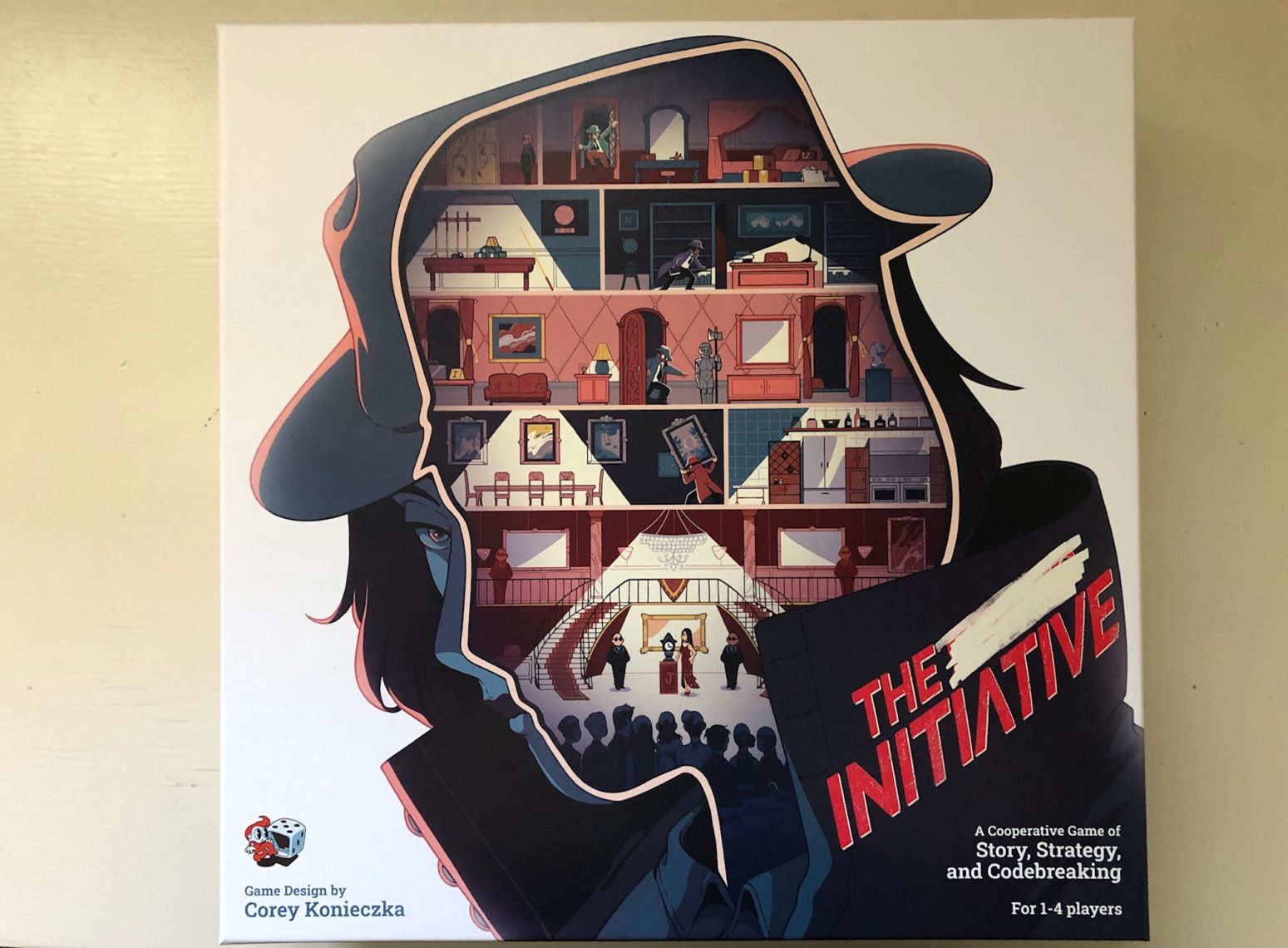If you don’t like decoding messages or co-operative games (heads-up:I enjoy both very much), then I’ve got nothing for you this week. Move along and clear the sidewalk.
If, on the other hand, you have at least a passing interest in either of the above, and you want a unique, original, and oh-so-satisfying tabletop experience, first get down on your knees and bow to Corey Konieczka and then run-do-not-walk to your FLGS and buy The Initiative.
Since The Initiative is a legacy-style campaign game it will be hard to fully elaborate on its charms. Because spoilers. You will have to take my word that it is a game that will constantly surprise and delight you as it unfolds, and in structure I argue that it bears a slight resemblance to the videogame Nier: Automata.

You and up to three others (it is totally playable and enjoyable solo, which I can attest to because that’s how I’ve been playing it) take the role(s) of four teens who stumble on an old game called The Key at a garage sale. The story, which is told in graphic form, goes on to tell what happens as they get more and more interested (maybe obsessed?) with The Key. The storyline and your own irl progression become intertwined in a very Charlie Kaufman-esque way through a series of fourteen missions where players rush to decode and answer a message before time runs out.
Each mission starts by reading a page from the Guidebook, choose-your-own-adventure-style, which continues the story. At a certain point you will then be directed to set up the game, which plays out on a floorplan-board bestrewn with randomly-distributed face-down clue tiles and various other obstacles. Players start at the entrance (which is in a different location every time) and some cards in hand from a three-suited deck consisting of cards numbered from 1 to 12. Each player must take either one or two actions on her turn, each of which requires spending cards either to the appropriate action pile or (in the case of unique character actions) to the discard pile. At the end of your turn you usually draw back up to your hand limit (which scales by player count).

There are four regular actions: move; intel (flip clue tiles, possibly triggering traps); gathering clues from the current space; or regrouping, which wipes one of the other piles and is crucial for victory, since cards may only be played to an action pile if the number on the card played is higher than the topmost card in the pile. Since the regroup action can never be wiped, that means that one way to lose is to box yourselves in by leaning too hard on regrouping–but don’t worry, there are lots of other ways to lose, too.
Actually, I never lost that way in my plays; instead I lost by running out of time. After running through the deck once you shuffle the discard pile, adding in some Time cards; at this point you are officially In Peril, because once three Time icons show up it’s game over.
After the first mission I thought I knew how the rest of the campaign was to play out and said to myself, “well this is charming and cute”. After Mission 2 I thought, “hmmmm…more to this than meets the eye”. After Mission 3 I was in love. I’ve played plenty of escape-room type games and Konieczka (or whoever thought up these puzzles) has definitely done their homework in terms of Easter eggs.

But The Initiative is more than an “escape room legacy game” for other reasons as well. The four suitably-diverse main characters have emotional depth which factors into the gameplay, and the main plot wouldn’t be out of place in a Netflix mini-series. There isn’t much of a branching narrative, admittedly, and some might find some of the “choices have consequence” moments a bit cheesy–but it’s still a step in the right direction in terms of the game having having greater narrative ambition.
More impressive from a game design standpoint is that I would argue that even after you finish the campaign you can go back and replay any of the missions purely for the gameplay challenge using different combinations of characters (they each have unique rule-breaking abilities) as long as you houserule the number of clues you need to uncover to consider the mission solved.
And finally, as anyone who finished the campaign will discover, The Initiative is actually a game system with infinite potential for expansions with new storylines, maps, missions, and characters–something I hope Knieczka and publisher Unexpected Games are already considering and/or working on.
Until now Corey Konieczka’s games have tended towards adapting s.f., Lovecraft, and fantasy IP to the tabletop. His 2018 game Discover: Lands Unknown departed from that but wasn’t all that well-received. The Initiative on the other hand has been very well received (and deservedly-so, if you haven’t sussed out my take already) and possibly represents a major pivot in the trajectory of his career. Longtime fans of his designs might lament that because they love the pew-pew and the woooOOOOoooo ((theramin sound)) and want more of the same. But to me Konieczka has vaulted to the forefront of designers with something new to say in terms of putting narrative and player experience first and then figuring out the mechanics that serve those objectives. It’s a triumph, and (given the caveat at the top of the article) you should try it.
[…] that tell stories using integrated mechanics, theme, emergent gameplay.” You might remember his article about The Initiative a while back. He’s particularly drawn to designers Alexander Pfister, Amabel Holland, Jeremy […]